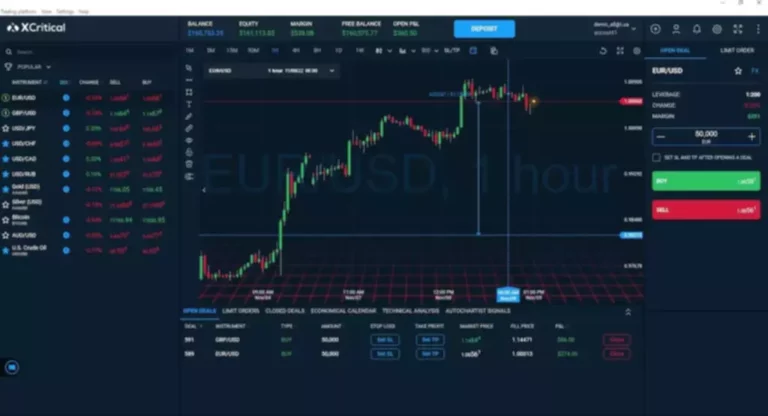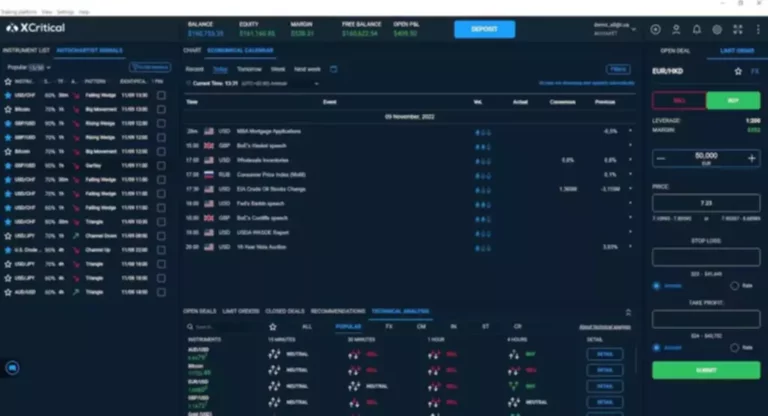Buy-side Vs Sell-side: Key Differences And The Way They Work
03/12/2024
Some could give consideration to conservative investments such as bonds and blue-chip shares, whereas others might take on more threat seeking greater returns. This knowledge can help you better perceive the dynamics of the market, make extra knowledgeable investment decisions, and navigate the complexities of the financial business. They are responsible for identifying promising prospects, analyzing monetary statements, assembly with firm management, and constructing financial fashions to forecast future efficiency. They then suggest to portfolio managers whether to buy, hold, or promote particular securities.
The Function Of Consumers:
This collaboration underscores the complementary roles of each events in achieving investment aims. Invested Higher may obtain compensation from a variety of the financial advisors or companies featured on our web site. This compensation might influence how and where advisors or firms seem on the location, including the order during which they seem. Our opinions are our own, and we’re dedicated to offering fair and unbiased data to help you make knowledgeable selections about your financial future. The “sell-side” of the monetary market, then again, refers to entities that sell investment services, similar to funding banks, broker-dealers, and business banks.

Meanwhile, a buy-side analyst often can’t afford to be incorrect typically, or at least not to a degree that considerably impacts the fund’s relative efficiency. DealRoom facilitates numerous M&A transactions yearly https://www.xcritical.in/ for organizations across each sectors. On a big account, the mission of many sell-side analysts is to promote the concept and strategy. Though the distinction between the sell-side and buy-side could be obvious on the surface, there’s still no strict borderline between each side. Sometimes, sell-side analysts fail to revise their estimates, but their expectations do change. Monetary information articles will refer to a whisper quantity, which is an estimate that is completely different from the consensus estimate.
Contents
Purchase side analysts work for investment corporations and manage investment portfolios on behalf of their shoppers, such as hedge funds, mutual funds, and pension funds. Sell facet analysts, however, work for brokerage corporations and supply investment suggestions to shoppers. Buy-side analysts work for establishments that invest cash on behalf of their shoppers, corresponding to mutual funds, pension funds, hedge funds, and insurance firms. These analysts conduct in-depth research on securities, sectors, and markets to help their employers make higher investment selections. Asset administration roles contain managing purchasers’ investments and providing them with traditional and alternative funding merchandise individually or via a packaged product like a mutual fund.

Buyers ought to approach research and suggestions from either side with a important eye, contemplating potential biases and incentives. In The End, traders should conduct their own due diligence, diversify their sources of data, and make investment decisions that align with their risk tolerance and monetary objectives. Algorithmic buying and selling is essential for both buy aspect and promote side corporations because Prime Brokerage it boosts trading efficiency, reduces prices, and minimizes human error.
One is that you simply get to be more selective along with your trades since you’re not underneath strain to promote securities daily like sell-side merchants are. Let’s say that Goldman Sachs, a large funding bank (sell-side), is advising a client on the method to elevate capital. Buy-side analysts with strong quantitative skills can specialize as quantitative analysts, developing and implementing mathematical models for funding decision-making. Financial advisors additionally act as intermediaries between the buy-side and sell-side, helping to negotiate transactions and make certain that each side are glad with the terms of the deal. Yes, some massive financial establishments employ buy-side and sell-side analysts, although conflict-of-interest guidelines stipulate that the activities and information on one aspect should not find their way to the other.
They usually have a tendency to concentrate on the risks and pitfalls somewhat than an investment buyside liquidity‘s upside potential. To break into the buy-side trading world, it’s important to have a powerful understanding of stocks and bonds in addition to a solid educational background in economics and finance. As a buy-side trader, you’ll be answerable for making funding decisions for the firm, which can range from asset allocation to particular person stock purchase or sale decisions.

Nevertheless, smaller firms sometimes focus on one space as a end result of fewer sources are concerned. Buy-side analysts are primarily concerned with making worthwhile investment suggestions for their own funds. They have a vested curiosity in the efficiency of their investments and are sometimes compensated based mostly on the returns they generate. As a end result, buy-side analysts are typically more cautious and risk-averse than their sell-side counterparts.
By understanding each, you may acquire a clearer picture of how these analysts assist shape the views of traders. Buy-side merchants are sometimes compensated based mostly on the efficiency of their portfolio, while sell-side merchants are typically compensated primarily based on the commissions they generate. Maybe the most important distinction is that buy-side merchants are sometimes seeking to purchase securities, whereas sell-side traders are typically seeking to sell them. This difference is essential because it signifies that the goals of the two groups of merchants are often in conflict. One notable gray area is “traders,” who’re thought of sell-side however they do actively participate within the market’s asset buying and selling. However, it is sensible when you suppose about that most sell-side merchants are doing “market making,” which is ultimately a service for his or her buy-side clients who are sometimes on the opposite facet of trades.
- This distinction is essential as a result of it implies that the objectives of the two groups of merchants are often in battle.
- Let’s say that Goldman Sachs, a big investment bank (sell-side), is advising a client on how to raise capital.
- In short, the aim of the sell-side is to discover a potential acquirer who is ready to propose a helpful deal.
- Understanding these differences may help navigate profession paths or leverage their insights effectively.
- Buy side analysts work for investment corporations and handle investment portfolios on behalf of their purchasers, corresponding to hedge funds, mutual funds, and pension funds.
While the promote aspect incessantly leverages advancements for improved market predictions and client engagement, the purchase side would possibly concentrate on integrating new knowledge analytics tools to refine funding methods. Purchase facet corporations make the most of their experience to optimize investment portfolios and meet specific financial targets. Buy-side analysts can tackle the position of asset allocators, who are responsible for figuring out the optimal mix of asset classes within funding portfolios.
They then create various advertising materials, including detailed financial statements and Excel reviews, distributing the knowledge to potential investors on the buy-side. This process completes the cycle of capital circulate in monetary markets, where the sell-side facilitates the issuance and distribution of securities to meet company financing needs. Wealth management roles involve offering financial planning, investment management, and different monetary providers to high-net-worth individuals and families. Wealth managers help purchasers manage their wealth and achieve their monetary goals by way of a complete method to managing their monetary affairs.

